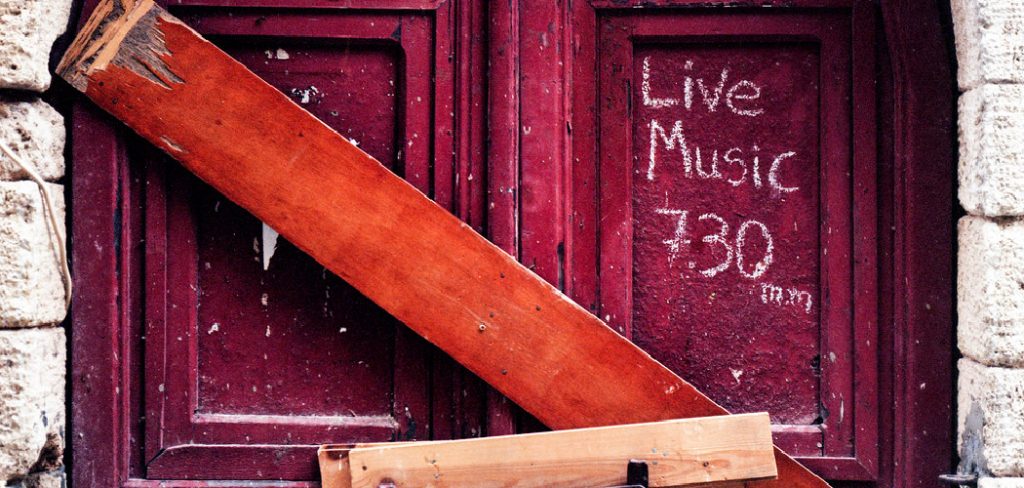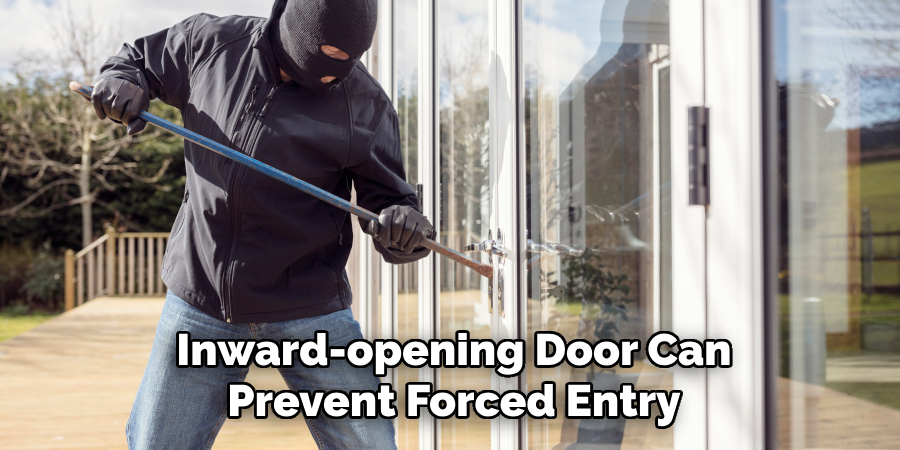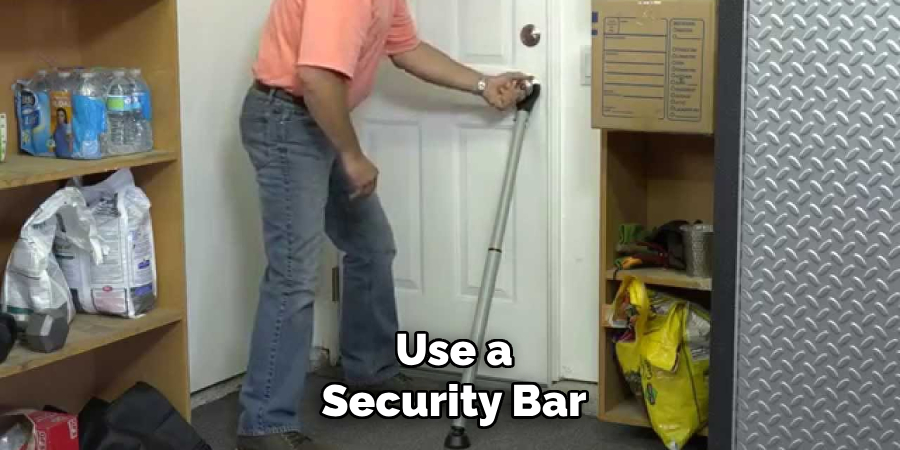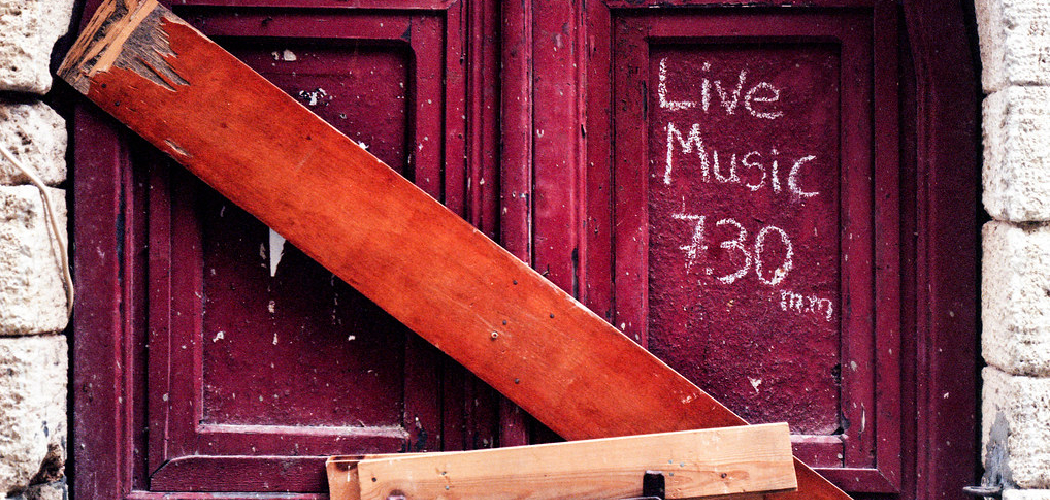Securing a door that opens inward can be crucial for ensuring safety during emergencies or preventing unauthorized entry. Whether you’re in a hotel room, dorm, or your own home, knowing how to effectively barricade such a door adds an extra layer of protection.

This guide on how to barricade a door that opens in will explore various methods and tools you can use to fortify a door that swings inward, ensuring you are prepared for any situation that may arise.
What is a Door That Opens Inward?
A door that opens inward is a common design in many residential and commercial buildings. This type of door swings into the interior space when opened, as opposed to outward into a corridor or hallway. Inward-opening doors are often preferred for their ease of use and the ability to maximize space in corridors and public areas.
They also offer advantages in terms of aesthetics and weatherproofing, often sealing more tightly against drafts and elements. However, in certain scenarios, such as emergencies, the inward swing can pose challenges for quick exit or effective barricading. Understanding these dynamics is essential for implementing secure and efficient measures.
Why is it Important to Barricade a Door That Opens Inward?
In emergency situations, barricading a door that opens inward can buy time and provide a safe haven. This is especially true in active shooter or intruder scenarios where seconds count. Having the knowledge and means to reinforce an inward-opening door can also prevent forced entry during burglaries or home invasions.

Plus, in cases of severe weather and natural disasters, properly barricaded doors can help keep out debris and protect occupants.
Tools for Barricading a Door That Opens Inward
Wedges
These are small triangular-shaped pieces of hard plastic or rubber that you can wedge under the bottom edge of the door from the inside. When inserted correctly, they prevent the door from being pushed open.
Door Jambs
A door jamb is the frame into which a door is secured. In an emergency, you can use items such as chairs or tables to jam against the top of the doorjamb and below the doorknob in order to prevent it from swinging open.
Brackets
You can also purchase specialized brackets that fit over the hinge side of a door and wrap around it to reinforce its connection to the frame. These can be easily attached with screws or even adhesive tape.
8 Step-by-step Guidelines on How to Barricade a Door That Opens in
Step 1: Assess the Door
Before you start the barricading process, it’s important to thoroughly assess the door and its surrounding environment. Determine the door’s material, such as wood, metal, or a composite, to understand its strength and points of vulnerability. Examine the door frame and hinges to ensure they are intact and can withstand pressure.

Additionally, take note of any nearby furniture or objects that could be used in the barricading process. Identifying all potential weaknesses and available resources will help you make informed decisions about the best method and tools to use for securing the door.
Step 2: Block the Door with Heavy Furniture
Once you have assessed the door and its surroundings, the next step is to utilize heavy furniture to block the door. Choose robust pieces of furniture such as dressers, desks, or sofas that can create a substantial barrier. Position the heaviest item directly against the door, ensuring it makes full contact with the door surface to provide maximum resistance. If possible, angle the furniture so that it not only blocks the door but also leverages its weight against the floor.
For added security, stack additional heavy items on top of or around the first piece of furniture to reinforce the barricade. For example, place a table against the door and then stack books, boxes, or other large objects on the table to increase the overall mass and stability of the barricade. This method helps absorb and distribute any force exerted on the door, making it significantly harder for someone to push it open from the outside.
Step 3: Use Wedges
If you have access to wedges, insert them under the bottom edge of the door from the inside. Ensure that they are positioned at an angle and not perpendicular to the door, as this will create a tighter seal. Wedges can be especially useful in combination with heavy furniture, as they add another layer of security by preventing any gaps between the floor and the door.

You can also make your own wedges using materials such as wooden blocks or even rolled-up towels or blankets. Simply place them under the door at an angle and adjust them until you feel a tight fit against the bottom edge of the door.
Step 4: Place Door Jambs
In addition to using heavy furniture and wedges, you can also place items like chairs or tables against the top of the door jamb and below the doorknob. This method creates a physical barrier that makes it difficult for someone to push the door open, especially if they are trying to use force.
Another option is to place a metal or wooden bar between the doorknob and the floor. This creates an even stronger obstacle for someone trying to enter through the door.
Step 5: Reinforce Hinges with Brackets
If you have access to specialized brackets, you can reinforce the hinges of an inward-opening door by attaching them over the hinge side and wrapping them around both the door and frame. These brackets add extra strength and stability, making it much harder for someone to break through or damage the hinges.
Alternatively, you can also use strong adhesive tape or even duct tape to secure the hinges against external pressure. Make sure to wrap the tape tightly around the hinges and frame several times for maximum effectiveness.
Step 6: Use a Security Bar
You can also utilize a security bar specifically designed to reinforce inward-opening doors in emergency situations. These bars are usually adjustable and can be easily installed by placing one end against the doorknob or handle and the other against a stable object, such as the floor or wall. This creates a strong barrier that prevents the door from being pushed open, even if someone tries to kick it down.

It’s important to note that some security bars may not fit on all types of doors, so it’s essential to have one that is compatible with your door’s dimensions and handle type.
Step 7: Secure Windows and Other Entry Points
While focusing on barricading the inward-opening door, don’t forget to secure other potential entry points in the room, such as windows or sliding doors. Use curtains or blinds to cover these openings and prevent outsiders from seeing inside. You can also reinforce them with heavy furniture or place objects like broom handles or dowels in the track to prevent them from being opened from the outside.
It’s also crucial to make sure all other doors leading into the room are locked and secured, as they could also be potential entry points for intruders.
Step 8: Stay Vigilant
No matter how well you have barricaded the door, it’s important to remain vigilant and prepared for any situation. Stay close to the door and keep a phone or communication device nearby in case you need to call for help or contact emergency services. If possible, have multiple exits and escape routes planned ahead of time in case the barricade fails or becomes compromised. Remember to stay calm and focused, and always prioritize your safety above all else.

Following these steps on how to barricade a door that opens in can help you effectively barricade an inward-opening door and increase your safety in emergency situations. Remember to regularly review and update your emergency preparedness plans, including your barricading techniques, to ensure the best possible protection for yourself and others. Stay safe!
Additional Tips for Barricading a Door That Opens In
- Use multiple methods for added security
- Make sure items used are stable and cannot easily be moved or knocked over
- Have a designated safe room in your home with reinforced doors, windows, and barricading materials
- Practice your barricading techniques regularly to ensure quick and effective response in case of an emergency
- Consider investing in security devices such as alarms or cameras for added protection
- In case of a fire, always prioritize escaping rather than barricading yourself inside a room. Make sure you have working smoke detectors and practice fire escape plans regularly.
Frequently Asked Questions
Q: Can I Use Only One Method to Barricade a Door?
A: While one method may provide some level of security, it’s best to combine multiple methods for maximum effectiveness. This also ensures that if one method fails, there are backups in place.
Q: How Can I Tell If a Door Opens Inward or Outward?
A: Stand on the side of the door with the hinges. If the doorknob is on your right-hand side, it’s an inward-opening door. If it’s on your left-hand side, it’s an outward-opening door.
Q: What Do I Do if There Are No Heavy Objects Available to Use for Barricading?
A: You can use items such as chairs, tables, or even large suitcases in place of heavy furniture. Alternatively, you can try using multiple layers of stacked books or boxes to create a makeshift barricade. Remember to always prioritize stability and ensure that whatever items you use cannot easily be moved or knocked over.
Q: Is it Safe to Use Wedges on Doors with Automatic Closers?
A: No, using wedges on doors with automatic closers can cause damage to the door and potentially prevent it from closing properly. Instead, try using heavy furniture or other methods of barricading that do not require placing objects under the door.
Conclusion
Effectively barricading an inward-opening door involves a combination of smart planning, the right materials, and vigilance. By employing multiple techniques—from using heavy furniture and security bars to reinforcing hinges and securing other entry points—you can significantly enhance your safety in emergency situations.
Preparation is key; regularly practicing these methods, maintaining a designated safe room, and investing in security devices can provide added layers of protection. Always remember to stay calm, stay focused, and prioritize your safety above all else, especially in critical moments. With these steps and guidelines on how to barricade a door that opens in, you can take proactive measures to protect yourself and others in the event of an emergency.

